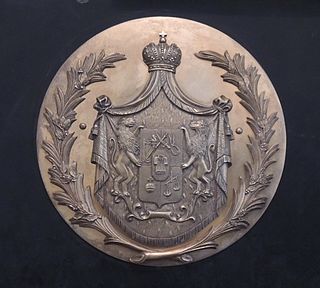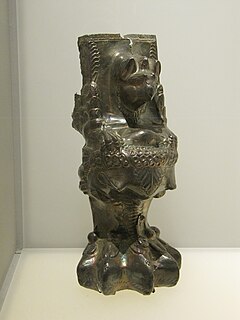Year 234 BC was a year of the pre-Julian Roman calendar. At the time it was known as the Year of the Consulship of Albinus and Ruga. The denomination 234 BC for this year has been used since the early medieval period, when the Anno Domini calendar era became the prevalent method in Europe for naming years.

In Greco-Roman geography, Iberia was an exonym for the Georgian kingdom of Kartli, known after its core province, which during Classical Antiquity and the Early Middle Ages was a significant monarchy in the Caucasus, either as an independent state or as a dependent of larger empires, notably the Sassanid and Roman empires. Iberia, centered on present-day Eastern Georgia, was bordered by Colchis in the west, Caucasian Albania in the east and Armenia in the south.

The Kingdom of Iberia was a medieval Eurasian monarchy under the Bagrationi dynasty which emerged circa 888 AD, succeeding the Principality of Iberia, in historical region of Tao-Klarjeti, or upper Iberia in north-eastern Turkey as well parts of modern southwestern Georgia, that stretched from the Iberian gates in the south and to the Lesser Caucasus in the north.

Mirian III was a king of Iberia or Kartli (Georgia), contemporaneous to the Roman emperor Constantine the Great. He was the founder of the royal Chosroid dynasty.

Ashot I the Great was a presiding prince of Iberia, first of the Bagratid family to have attained to this office c. 813. From his base in Tao-Klarjeti, he fought to enlarge the Bagratid territories and sought the Byzantine protectorate against the Arab encroachment until being murdered c. 826. Ashot is also known as Ashot I Curopalates for the Byzantine title he wore. A patron of Christian culture and a friend of the church, he has been canonized by the Georgian Orthodox Church.
According to the medieval Georgian Chronicles, Armazi was the supreme deity in the pantheon of pre-Christian Caucasian Iberia.

The Bagrationi dynasty is a royal dynasty which reigned in Georgia from the Middle Ages until the early 19th century, being among the oldest extant Christian ruling dynasties in the world. In modern usage, the name of the dynasty is sometimes Hellenized and referred to as the Georgian Bagratids, also known in English as the Bagrations.
The Chosroid dynasty, also known as the Iberian Mihranids, were a dynasty of the kings and later the presiding princes of the early Georgian state of Iberia from the 4th to the 9th centuries. The family, of Iranian Mihranid origin, accepted Christianity as their official religion c. 337, and maneuvered between the Byzantine Empire and Sassanid Iran to retain a degree of independence. After the abolition of the Iberian kingship by the Sassanids c. 580, the dynasty survived in its two closely related, but sometimes competing princely branches—the elder Chosroid and the younger Guaramid—down to the early ninth century when they were succeeded by the Georgian Bagratids on the throne of Iberia.

The Pharnavazid, Pharnabazid or Parnavazianni is the name of the first dynasty of Georgian kings of Kartli (Iberia) preserved by The Georgian Chronicles. Their rule lasted, with intermissions, from the 3rd century BC to the 2nd century AD. The main male line is reported to have become extinct early on and followed by houses related to it in the female line. By the close of the 2nd century AD, the Pharnavazid rule came to an end and the Arsacid Dynasty took over the crown of Iberia.
The Artaxiads, a branch of the eponymous dynasty of Armenia, ruled Iberia from c. 90 BC to 30 AD. According to the medieval Georgian chronicles, they acquired the crown of Iberia after the Iberian nobles revolted against their king P’arnajom, of the Pharnabazid dynasty, and petitioned the king of Armenia to send his son, who was married to a Pharnabazid princess, as their new monarch. Both the king of Armenia and his son are referred to in the chronicles as “Arshak”, probably a confusion with Artaxias which seems to be taken as a general term in reference to the Artaxiad kings of Armenia. Professor Cyril Toumanoff identifies the king of Armenia of this account as Artavasdes I and considers the newly installed Iberian king, Artaxias I, to have been his son. The chronicle goes on to describe a great battle between a combined Iberian-Armenian army against P’arnajom and his followers. In the end, P’arnajom is defeated and killed, and thereafter the Armenian prince becomes the king of Iberia.

Principality of Iberia was an early medieval aristocratic regime in a core Georgian region of Kartli, i.e. Iberia per classical authors. It flourished in the period of interregnum between the sixth and ninth centuries, when the leading political authority was exercised by a succession of princes. The principate was established shortly after the Sassanid suppression of the local royal Chosroid Dynasty, around 580; it lasted until 888, when the kingship was restored by a member of the Bagrationi Dynasty. Its borders fluctuated greatly as the presiding princes of Iberia confronted the Persians, Byzantines, Khazars, Arabs, and the neighboring Caucasian rulers throughout this period.
The Durdzuks, erroneously known as Dzurdzuks, was a Georgian name from The Georgian Chronicles used to describe the people in the North Caucasus, possibly the Nakh peoples.
This article lists Georgian monarchs, and includes monarchs of various Georgian kingdoms and the British monarchs of the Georgian era.
Kuji was a king and eristavi of Colchis. During his reign his castle of Nokalakevi was built.
Kartam was a Pharnavazid eristavi of Colchis and prince of the Kingdom of Iberia in the 1st century BC.

The Stele of Serapit or Armazi bilingual is a funerary stele with bilingual inscriptions written in Ancient Greek and Armazic, a local idiom of Aramaic, found in 1940, at Armazi, near Mtskheta, in the ancient capital of the Kingdom of Iberia. The stele memorialises a short-lived Georgian princess named Serapit. The inscriptions mention Georgian monarchs, Pharnavaz I of Iberia and Pharasmanes II of Iberia, and other members of aristocracy. The inscriptions are dated 150 AD.
Sasanian Iberia refers to the period the Kingdom of Iberia was under the suzerainty of the Sasanian Empire. The period includes when it was ruled by Marzbans (governors) appointed by the Sasanid Iranian king, and later through the Principality of Iberia.
Mirian is a Georgian masculine given name that may refer to









